#brachiation
Explore tagged Tumblr posts
Text

YOU!!!
3 notes
·
View notes
Text
What about ... gibbons? Did you forget? Recall. Gibbon couples hoot and howl in screeching deafening duets. When did your love last echo through the rainforest?
Gibbons are among nature's best brachiators.
With the utmost respect I must register my dissent. Gibbons are without exception the best EVER to brachiate. Gibbons are BRACHIATING ON VIBRATIONAL FREQUENCIES THAT OUR HUMAN CHAKRAL RESONATORS ARE TOO WEAK TO SYNCHRONISE WITH.
0 notes
Note
I posted a tweet fairly recently and was directed here. A few friends and I had been playing a game of frantic fanfic and came to the conclusion we believe Jared Hopworth hates feet to the extent where he has none, only hands. Thoughts?
Makes as much sense as anything else although callouses would become a big problem since I doubt he is brachiating around like his forebears.
151 notes
·
View notes
Text
youtube
i'm gonna shit an dpiss and cr y
oh how i long to brachiate with such whimsy
1 note
·
View note
Note
For the Artist's ask number 25. FBI thing
25. Based on your recent reference searches, what would the FBI assume about you?
That I'm probably a bit scatterbrained and google random things when a YouTube video makes me go "huh"

#Brachiation was in relation to planet zoo#rødkælk is for my drawing#brochureholder is because I want my booth for jpop to be a bit fancy maybe#Mona Lisa I dunno
8 notes
·
View notes
Text
thinking about how clip art and kids cartoons have an Archetypal Monkey (chimp sounds, prehensile tail like new world monkeys, brachiates like a gibbon, head and face vaguely macaque like) and an Archetypal Bat (large eyes like a fruit bat, tiny microbat feet, vampire bat fangs (hardly accurate to Desmodus, but that’s the intent)). I guess also there is the Generalized Crocodilian that is somehow a very bright green and Generalized Snake that is venomous and has a rattle and also somehow constricts. what other cartoon creatures just blend together various taxa into a wildly inaccurate hybrid freak
3K notes
·
View notes
Text
Idris is a BIG animal fan. An immense enjoyer of the creatures. Due to this, they have quite the menagerie of pets under their care, and they love every single one <3
What are some silly facts about your fl characters? I’m talkin the fun stuff! Stuff you don’t get to talk about! Stuff that seems inconsequential to others but you think are fun! Stuff you’re embarrassed to share because it’s “not important” ! Little things! Big things! Whatever you want to talk about but don’t get to!
#don’t let the animals hear but they do have favourites#also. it is much easier to get a collar on a brachiating spindlewolf vs a two-headed terror bird
136 notes
·
View notes
Text
Apes are a kind of monkey, and that's ok
This is a pet peeve of mine in sci comm ESPECIALLY because many well respected scientific institutions are insistent about apes and monkeys being separate things, despite how it's been established for nearly a century that apes are just a specific kind of monkey.
Nearly every zoo I've visited that houses apes has a sign somewhere like the one below that explains the supposed distinction between the two groups, focusing on anatomy instead of phylogeny.
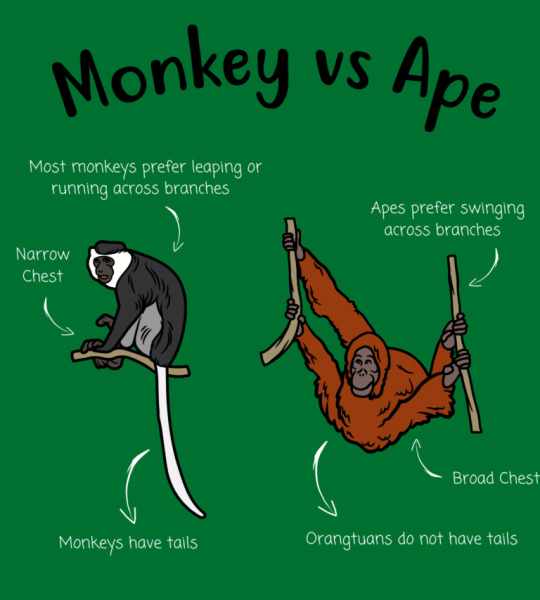
(Every time I see a graphic like this I age ten years) Movies even do this, especially when they want to sound credible. Take this scene from Rise of the Planet of the Apes:
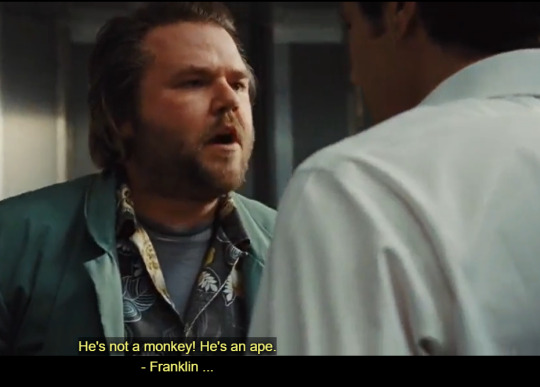
This guy Franklin is presented as the authority on apes in this scene, and he treats James Franco calling a chimpanzee a monkey like it's insulting.
But when you actually look at a primate family tree, you can see that apes are on the same branch as Old World monkeys, while New World monkeys branched off much earlier.

(I'm assuming bushbabies are included as "lorises" here?)
To put it simply, that means you and I are more closely related to a baboon than a baboon is to a capuchin.
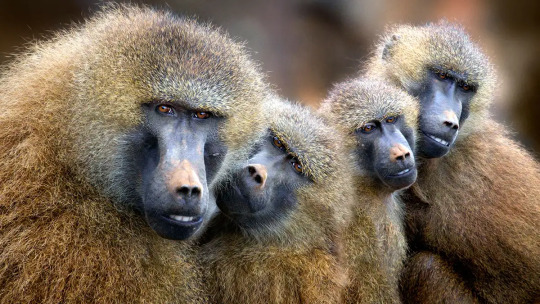
Either the definition of monkey includes apes OR we can keep using an anatomical definition and Barbary macaques get to be an ape because they're tailless.
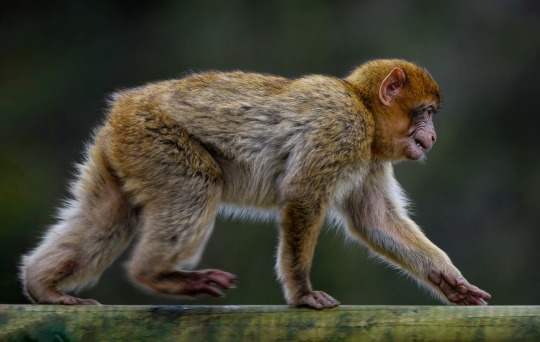
"I've got no tails on me!"
SO
Why did all this happen? Why did we start insisting apes are monkeys, especially considering the two words were pretty much interchangeable for centuries? Well I've got one word for ya...

This the attitude that puts humans on a pedestal over other life on Earth. That there are intrinsically important features of humanity, and other living things are simply stepping stones in that direction.
At the dawn of evolutionary study, anthropocentrism was enforced by using a model called evolutionary grades. And boy howdy do I hate evolutionary grades.
Basically, a grade is a way of defining a group of animals by using anatomical "complexity". It's the idea that evolution has milestones of importance that, once reached, makes an organism into a new kind of thing. You can almost think of it like evolutionary levels. An animal "levels up" once it gains a certain trait deemed "complex".
You can probably see the issue here; that complexity is an ephemeral idea defined through subjectivity, rather than based off anything truly observable. What makes walking on 2 legs more complex than walking on four? How are tails less complex than no tails? "Complexity" in this context is unmeasurable, therefore it is unscientific. That's why evolutionary grades suck and I never want to look at one.
For primates, this meant once some of them lost their tails, grew bigger brains, and started brachiating instead of leaping, they simply "leveled up" and became apes. Despite the early recognition that apes were simply a branch of the Old World monkey family tree (1785!), the idea of grades took precedent over the phylogenetic link.
In the early years of primatology, humans were even seen as a grade "above" apes, related but separated by our upright stance and supposed far greater intelligence (this was before other apes were recognized tool users).

It wasn't until the goddamn 1970s that it was recognized all great apes should be included in the clade Hominidae alongside humanity. This was a major shift in thinking, and required not just science, but the public, to recognize just how close we are to other living species. It seems like this change has, thankfully, happened and most institutions and science respecting folks have accepted this fact. Those who don't accept it tend to have a lot more issues with science than only accepting humans as apes.

And now, we come to the current problem. Why is there a persistent idea that monkeys and apes are separate?
I want to make it clear I don't believe there was a conscious movement at play here. I think there's a lot of things going on, but there isn't some anti-monkey lobby that is hiding the truth. I think the problem is more complicated and deals with how human brains and human culture often struggle to do too many changes at once.
Now, I haven't seen any studies on this topic, so everything I say going forward is based on my own experience of how people react to learning apes (and therefore, humans) are monkeys.
First off, there is a lot of mental rearranging you have to do to accept humans as monkeys. First you, gotta accept humans as apes, then you have to stop thinking in grades and look at the family tree. Then you have to accept that apes are on the Old World monkey branch, separate from the New World monkeys.
That's a lot of steps, and I've seen science-minded zoo educators struggle with that much mental rearranging. And even while they accept this to an extent, they often find it even harder to communicate these ideas to the public.
I think this is a big reason why zoos and museums often push this idea the hardest. Convincing the public humans are apes is already a challenge, teaching them that all apes are monkeys at the same time might seem impossible.
I believe the other big reason people cling to the "apes-aren't-monkeys" idea is that it still allows for that extra bit of comforting anthropocentrism. Think of it this way; anthropocentrism puts humans on a pedestal. When you learn that humans are apes, you can either remove the pedestal and place humans with other animals, OR, you can place the apes up on the pedestal with humanity. For those that have an anthropocentric worldview, it can actually be easier to "uplift" the apes than ditch the pedestal.
Too make things worse, monkeys are such a symbol of a "primitive" animal nature that many can't accept raising them to the "level" of humanity, but removing the pedestal altogether is equally painful. So they hold tight to an outdated idea despite all the evidence. This is why there's often offense taken when an ape is called a monkey. It's tantamount to someone calling you a monkey, and that's too much of a challenge to anthropocentrism.
Personally, I think recognizing myself as a monkey is wonderful. Non-ape monkeys are as "complex" as any ape. They make tools, they have dynamic social groups, they're adapted to a wide range of environments, AND they have the best hair of all primates.
I think we should be honored to be considered one of them.
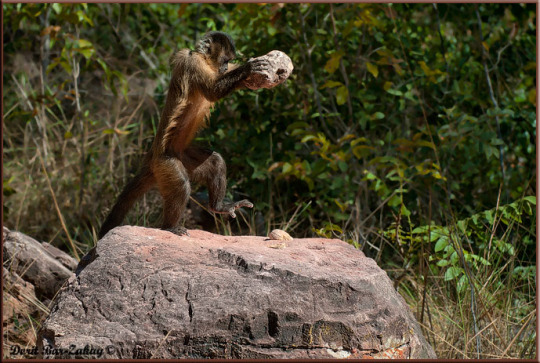

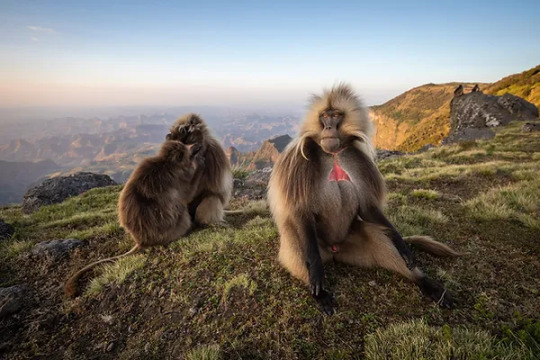
3K notes
·
View notes
Note
i noticed in colder months at the zoo they give some but not all primates blankets to cover themselves with (mainly chimps/orangs/other quadripeds get them from what I've seen). Is there a reason why we don't see brachiating primates get/use blankets?
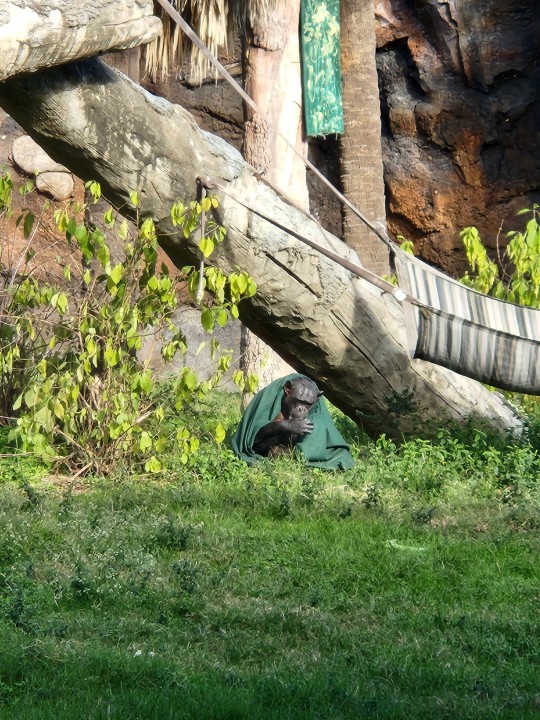
I don't think there's like, a hard rule against other species of apes or monkeys having blankets. I'd guess it's more about two things: do they use them / are they enriching, and is it safe for them to have blankets?
If an individual animal isn't interested in having blankets or using them, then they probably won't get blankets. Great apes all build nests to sleep in at night, which is why they're such a common taxa to see get blankets and use them. It sounds like research into nesting behavior is ongoing but not all primate species do it.
The other thing - and this can be a real issue for all primate enrichment- is safety. Blankets and other fabric can be torn and ingested, as well as used by ingenious minds for all sorts of purposes... like maybe dangling a strip outside a fence to entice guests over to give attention. If someone is known to be naughty with blankets they might have limited access (e.g. only behind the scenes, where they can be monitored) or they might get other bedding, like straw and shavings, that would be less appealing.
I'd be interested to hear from primate keepers if there's anything I've missed here!
199 notes
·
View notes
Note
Do you have a woy fancharacter? If you do, can I seee? And if you don't, you should definitely make one
i do! he's basically just a self-insert, but i do get to experiment a bit with limiting my limbs for expressions this way lol


(the second one is a little reference thing i literally did five minutes ago)
he's like, a bioluminescent mushroom monkey from a jungle planet covered in very tall trees with a bunch of branches to brachiate between. all of those danglies are prehensile depending on the necessity for more limbs! he can also do this! intriguing stuff!

#ask#myart#wander over yonder#oc#if you jump on his head he gets squashed much like the noble goomba#wander#he's there technically
76 notes
·
View notes
Note
you have such a well-observed and carefully rendered understanding of cat anatomy... excellent character designs, very distinct but still with that attention to realism.... and yet... they keep supinating their paws and rotating their shoulders like they evolved for brachiation. it's so jarring. why such a contradictory choice when you've worked so hard to make them realistic?
I take liberties wherever I see fit, and I feel like I have a good enough understanding of cat anatomy to take those liberties. "learn the rules to break them" yadda yadda
my cats are capable of creating tools, books, helmets, etc. but i know there are certain anatomical limitations that would prevent them from realistically doing these things. there will be times where the cats wrists pronate more than they should, or their shoulders abduct further than they should. also, there are specific gestures difficult to acheive without pushing the limits of anatomy
short answer: creative liberties! i break anatomy rules to achieve some expressions/gestures, also to give them extra dexterity/mobility to craft items.
thank you for the compliments btw! and for the question itself!


155 notes
·
View notes
Text

From the archives: a little critter brachiating through its forest home. For protection, and when roosting it can close up its body to form a protective shell.
361 notes
·
View notes
Note
Hello I was looking at your "humans are space orcs" master list and I thought it would be interesting to add that not only we can lie, but also the animals on our planet and I think that could be something very interesting to exploit. Other intelligent species also lie, it's normal, but for an animal that acts on instinct to lie directly to someone's face is great. Like for example when you are latching and your dog just started latching too or just pretending he is hurt when he is extremely fine.
ASDFGH this is actually really interesting because lying is also a survival mechanism! Many species “lie” especially birds and insects and humans do it without even realizing.
The atlas moth has evolved to make its wings look like snake heads to scare off birds from watching them :)
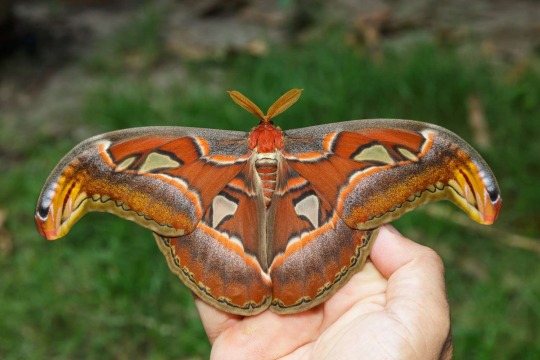
Many birds (and animals like cats) will poof up their feathers/fur to make themselves look bigger than they really are.
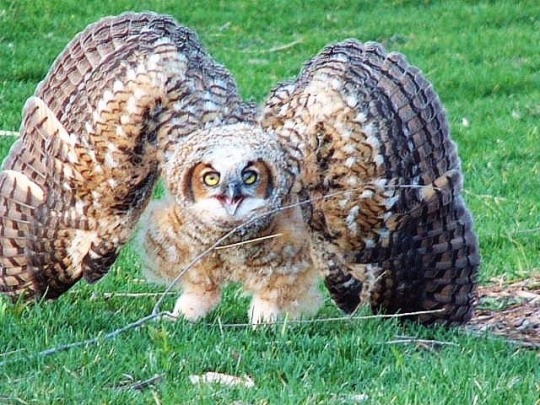
Humans are interesting though, one of our evolved tricks is standing on two legs and being able to raise our arms directly above us thanks to brachiation/having our arms placed outside of our body barely attached to our skeletons. This is how we are able to hang from our arms and swing on branches ;3 however this makes us look a lot bigger than we really are thus making us look much more powerful to things like other predators and pray who might wish to harm us. Tigers and other cats have fake eyes on the back of their ears to make it look like they’re facing the wrong direction to protect them from attacks from behind!
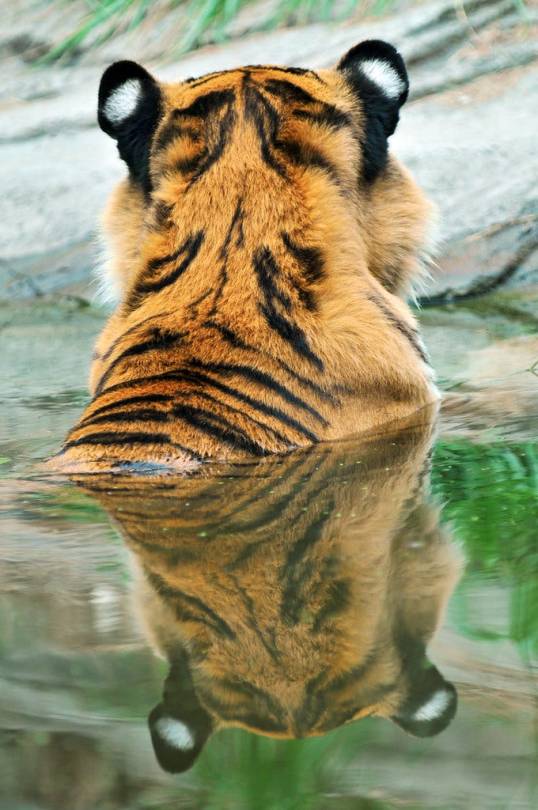
A lot of survival experts will say that making yourself look bigger is a good thing and making lots of noise. Many animals can’t tell the difference and assume that tall/loud = powerful/dangerous.
Loud noises are often associate to danger, ex: animals attacking, a falling tree or land slide would be an environmental danger, storms ect. Loud noises generally just mean “dangerous” so humans having loud voices helps!
Then you get into the more complex lies. The ones that can be used for malicious intent. I would say that these have their roots in self preservation/satisfaction. Animals trick each other quite often for food and attention and such. Humans aren’t really any different, we might do it out of perceived necessity or in more rare cases joy of watching the suffering of others which is only really found in the more “intelligent” species. Orcas will torture an animal/prey species for fun. Humans have done this too. It’s pretty barbaric.
I like to imagine there’s a certain point where this goes away. Like more advanced beings who travel literal galaxies have kind of evolved past basic instincts. They’re probably still there but not nearly as prominent. They probably know about lies and there’s probably species who have no use for it or never really did. Like purely telepathic species would be able to detect it much easier but they also likely have much less miscommunication issues. I feel like false info in general is so deeply integrated into evolution it’s almost impossible to avoid and possibly even necessary all to some extent.
I think lying is pretty well established in the universe but it would be fascinating to see a species who has no concept of it. They would probably look a lot like the dogs who get fooled by the disappearing blanket trick
It would actually be funny to try this on an alien tbh, sorry this took so long I had no clue I had something in my ask box 😭 it never told me?
Masterlist
#humans are space orcs#aliens#humans are weird#humans are deathworlders#haso writing#haso#humans are space australians
88 notes
·
View notes
Text

Spectember day 9: Marsupial Madness
Around 25 Millions of Years in the future, after the collision of Australia into the Asian Continent and a great Faunal Interchange that caused many animals who never met each other to now live closely, making for many extinctions and speciations, such as that of Tree Kangaroos, who managed to survive the interchange and actually thrive in the future forests and jungles of Asia.
One such clade of Kangaroos evolved to closely resemble the now extinct lemurs from Madagascar, with a form similar to that of *Megaladapis spp.*. With long arms, a short tail and long legs adapted for both walking and jumping from tree to tree. These animals do live like that, eating the leaves of trees and bushes, but also feeding on ground animals such as invertebrates, reptiles and small mammals.
However the lemur comparison is not the only to be made here, as the long arms and fingers of the so called Marsupial lemurs are also adapted for brachiation, with somewhat flexible shoulders almost like those of the now also extinct apes.
#spectember#spectember2024#art#my art#illustration#worldbuilding#spec bio#speculative biology#spec evo#speculative evolution#speculative zoology#convergent evolution#tree kangaroo
20 notes
·
View notes
Text
me: i think its so hot when a goth girl wears cookie monster pajama pants well into adulthood
tumblr user biblicallyacuratebakugo: This is really what I mean when I say folks who are exclusively fossorial might not think about cursorial normativity in their own lives because they think it doesn’t affect them. But it’s unfortunately so common for people to get mocked just for brachiating or dressing a certain way like how OP describes. We’re really creating these false dichotomies in the community
68 notes
·
View notes
Text
🌿✨ Meet the Gibbon: The Swinging Acrobat! ✨🌿
🐒 Fun Gibbon Facts: 1️⃣ Gibbons are known as nature’s trapeze artists, swinging effortlessly between trees using their long arms—a skill called brachiation! 2️⃣ They sing loud and beautiful songs to communicate and mark their territory. 🎶 3️⃣ These adorable primates are monogamous and often seen with their lifelong partners—talk about couple goals! ❤️
🌍 Gibbons play a vital role in forest ecosystems by spreading seeds as they travel. Let's help protect their habitats for future generations!
💬 Which of these gibbon facts surprised you the most?
#GibbonLove #SaveTheGibbons #WildlifeWonders

11 notes
·
View notes